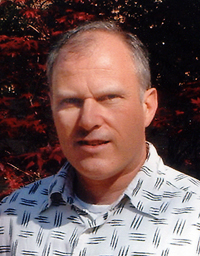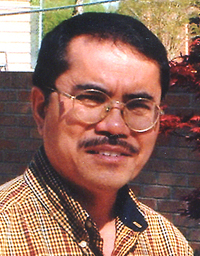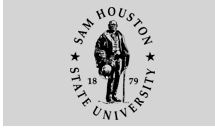Researchers Monitor National Growth of Naturopathy
 |
Geographer Don Albert |
Two Sam Houston State University researchers believe that
the problem of inadequate medical care distribution in the
United States may not be as severe as it seems.
Don Albert, associate professor of geography, and Ferry Butar,
associate professor of mathematics and statistics, have focused
their work on the geography of naturopathic physicians. These
NDs provide services which they describe as primary care,
and are becoming more accepted.
NDs seek prevention and healing through such methods as nutrition,
use of natural substances including plants and plant by-products,
Oriental medicine, lifestyle and stress management, natural
childbirth and minor surgery.
Albert's estimated that there are approximately 2,700 NDs
practicing in the United States as opposed to just over 870,000
allopathic doctors (MDs). NDs are not counted when agencies
determine Health Professional Shortage Areas (HPSAs) and Medically
Underserved Areas (MUAs).
 |
Statistician Ferry
Butar |
Thirteen states, with California being the latest, have established
licensing steps for NDs. Others are Alaska, Arizona, Connecticut,
Hawaii, Kansas, Maine, Montana, New Hampshire, Oregon, Utah,
Vermont and Washington.
Some of Albert's and Butar's most noted work has been projecting
which states are most likely to adopt ND licensing next. They
correctly predicted that California would do so before it
happened last year. Other prime candidates are Idaho, Nevada,
North Dakota and Massachusetts.
Albert said he knew of no effort in the current Texas legislative
session to approve naturopathic doctor licensing, but that
Texas ranks about 17th in the list of states most likely to
take such action.
The SHSU researchers have written that an increased status
for naturopathic physicians in Health Professional Shortage
Areas (HPSAs) and Medically Underserved Areas (MUAs) could
improve access to health care and reduce federal expenditures
in communities in which there are shortages.
Albert said that naturopathic physicians receive rigorous
education and training at the graduate and post-graduate level,
although there are only four naturopathic colleges in the
United States. Before they can begin their study, students
must have an undergraduate degree.
Graduate students spend between four and five years, including
a clinical internship, to complete the degrees of naturopathic
doctor or doctor of naturopathic medicine, which are referred
to as ND or NMD degrees.
Their curriculum includes such standard biomedical courses
as biochemistry, human physiology, histology, human anatomy,
and human physiology. Naturopathic courses include naturopathic
clinical theory, massage, homeopathy, botanical medicine,
healing systems, and others.
Albert and Butar found that most states allow NDs to perform
hydrotherapy, colonic irrigation, physiotherapy, naturopathic
manipulation, electrotherapy, gynecology, botanical medicine,
nutrition and homeopathy. They can prescribe drugs in some,
but not in others.
"If this profession continues to expand, as most indicators
suggest, then the impact of NDs on the reduction of shortage
counties is apt to be staggering," said Albert.
He said that the American Association of Naturopathic Physicians
has "somewhat optimistically" predicted that all
50 states will adopt licensing procedures by 2008.
He also pointed out, however, that the very success of and
attention to naturopathic treatments could work against growth
of the profession. Traditional medical doctors are looking
more favorably at such treatments, he said, and integrating
them into their practices.
In the past two years, Albert and Butar have published seven
articles in state, national and international journals on
their research. A compilation of these articles, "The
Geography of Naturopathic Physicians" is scheduled for
publication in book form in 2006.
"Counting NDs as primary care physicians would not solve
the problem of shortage areas completely," said Albert.
"There would still be shortage areas, just less of them.
"Reducing the number of shortage counties could translate
into financial savings or at least a redirection of resources
to the most needy and under-served counties."
- END -
SHSU Media Contact: Frank
Krystyniak
April 19, 2005
Please send comments, corrections, news tips to Today@Sam.edu
|


